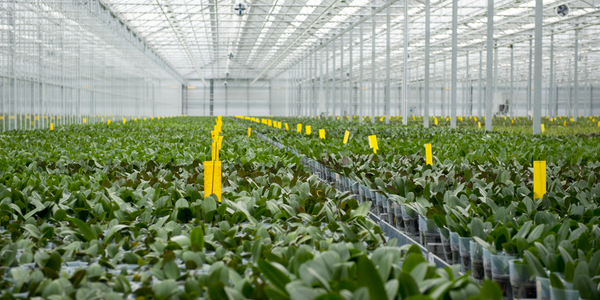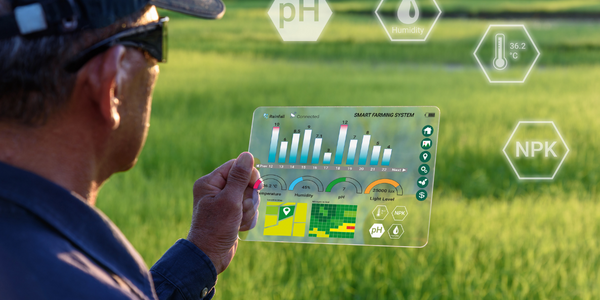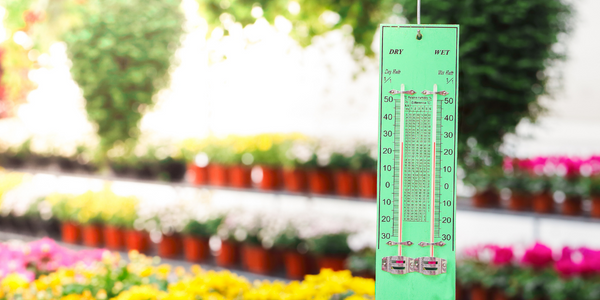公司规模
Large Corporate
地区
- Europe
- America
- Asia
国家
- Netherlands
- Kyrgyzstan
- Russia
- Uzbekistan
产品
- IBM Internet of Things Foundation
- IBM Bluemix
- IBM Cloudant
技术栈
- Internet of Things
- Cloud Computing
- Data Storage
实施规模
- Enterprise-wide Deployment
影响指标
- Environmental Impact Reduction
- Innovation Output
技术
- 平台即服务 (PaaS) - 连接平台
- 平台即服务 (PaaS) - 数据管理平台
适用行业
- 农业
- 教育
适用功能
- 物流运输
- 产品研发
用例
- 智能灌溉
- 农场监控与精准农业
- 水务管理
服务
- 云规划/设计/实施服务
- 数据科学服务
关于客户
Poseidon 项目是由 IBM 阿姆斯特丹高级研究中心和荷兰勇气基金会牵头的一项自愿计划。它旨在建立一个全球社区,通过应用物联网技术寻找减少用水量的解决方案,尤其是在农业领域。该项目由 IBM 阿姆斯特丹高级研究中心研究主管 Robert-Jan Sips 领导。该项目旨在教育农民有关用水的知识,帮助他们避免浪费和低效率,并提高学生和普通民众对关键环境问题的认识。
挑战
灌溉是种植农作物以养活人类的关键,但过度消耗水资源导致地球河流流速快于雨水补充的速度。人类水足迹的不断增长在一定程度上是人口增长的结果,但灌溉系统效率往往极低,尤其是在发展中国家。联合国粮食及农业组织表示,即使是良好的灌溉方案,其效率也只有 50% 至 60%。系统建设不良会导致绝大多数水在到达田地之前就因蒸发、渗漏和其他问题而流失。此外,如果农民选择在错误的时间(例如,下雨前)灌溉,水就会被浪费,甚至可能损害农作物。
解决方案
通过开发低成本的物联网土壤湿度传感器,Poseidon 项目旨在帮助农民选择灌溉农作物的最有效时间,从而彻底改变农业。该项目涉及使用低成本的 Raspberry Pi 计算机监测土壤湿度、温度和气压,并使用 MQTT 协议将数据上传到云。IBM® 物联网基金会充当所有 Raspberry Pi 机器和 IBM Bluemix™ 之间的消息代理。Bluemix 基于云的应用程序平台将数据存储在高度可扩展的 IBM Cloudant® 数据库中,并允许用户构建以图形形式呈现数据的应用程序,以及将其推送到 Twitter 并向用户的手机发送通知。
运营影响

Case Study missing?
Start adding your own!
Register with your work email and create a new case study profile for your business.
相关案例.

Case Study
Intelligent Farming with ThingWorx Analytics
Z Farms was facing three challenges: costly irrigation systems with water as a limited resource, narrow optimal ranges of soil moisture for growth with difficult maintenance and farm operators could not simply turn on irrigation systems like a faucet.

Case Study
Greenhouse Intelligent Monitoring and Control Solution
Farming Orchids is the most successful form of precision farming in Taiwan, and also the most exported flower. Orchids need a specific temperature and humidity conditions to grow and bloom, and its flowering time may not be in line with market demands, so the price collapses when there is overproduction. Therefore, some farmers began to import automated greenhouse control systems for breeding and forcing, which not only improves quality, but also effectively controls the production period and yield to ensure revenue. In 2012, an orchid farmer built a Forcing Greenhouse of about 200 pings (approximately 661 Square Meters) in Tainan, Taiwan. The system integrator adopted Advantech’s APAX-5000 series programmable automation controllers to build the control platform, coupled with Advantech WebAccess HMI/SCADA software, to achieve cloud monitoring. The staff of the orchid field can monitor important data anytime via smart phone, iPad, and other handheld devices, and control the growth and flowering conditions. System requirements: In the past, most environmental control systems of orchid greenhouses in Taiwan used PLCs (Programmable Logic Controller) with poorscalability and control, and could not be connected to the Internet formonitoring from the cloud. For advanced database analysis and networking capability, the PC platform must be adopted. Therefore, PAC Systems (Programmable Automation Controller) with both PLC programming capabilities andPC functions is a better choice.The environmental control of the Orchid greenhouse switches on and off devices like fan, shade net, cooling/heat pump, liquid flow control, water-cooling wall etc. It is controlled by a control panel of electric controllers, and is driven by a motor, to adjust the greenhouse temperature, humidity, and other environmental conditions to the set parameters.

Case Study
Enabling Internet of Things Innovation in Agriculture
DigiBale, wanted to apply technology know-how and IP from implementations successfully to more agriculture sectors including cotton, forestry, sugarcane and cattle. However, farmers and growers still have worries about the connected technology.

Case Study
Precision beekeeping with wireless temperature monitoring
Honeybees are insects of large economic value and provide a vital service to agriculture by pollinating a variety of crops. In addition, bees provide us with valuable products such as honey, beeswax, propolis, bee venom, etc. Monitoring of honeybee colony health, population, productivity, and environmental conditions affecting the colony health have always been exceedingly difficult tasks in apiculture. Research has shown that even small deviations (by more than 2°C) from the optimal temperatures have a significant influence on the development of the brood and the health of adult bees.





